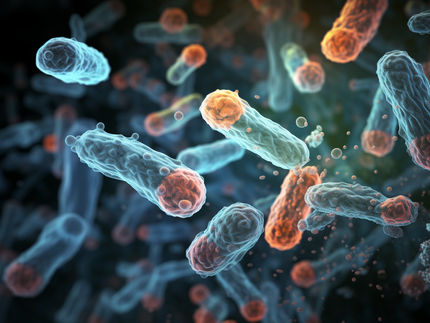How different antibiotics work together
In modern medicine, antibiotics are as important as they are problematic. On the one hand, they are still the only effective treatment option for many diseases; on the other hand, the number of resistant pathogens is on the rise, a situation about which the WHO already raised a serious warning a few years ago. Recently, the development of new antibiotics has stalled owing to economic considerations. The widespread use of antibiotics in animal husbandry even exacerbates the problem. A better understanding of existing antibiotics could show a way out of this dilemma. A group led by the biophysicist Tobias Bollenbach is developing new methods of enhancing our understanding of the effect of combinations of different antibiotics in an ongoing basic-research project funded by the Austrian Science Fund FWF.

Biophysicists are investigating the potential of combinations of different antibiotics to prevent, among other things, resistance.
stevepb, pixabay.com, CC0
Impact without precise understanding
“Combinations of drugs have been used in clinical applications for a very long time, for example for the treatment of HIV or cancer, and the same goes for antibiotics. Used together, some of them have a much stronger effect than you would expect. Most of the time, we have a very sketchy understanding of why this is,” says Tobias Bollenbach, who sees the reason for this in the way drugs are developed. The focus is mainly on the effect of a drug and not on getting an exact understanding of how this effect comes about. “In many cases, we know where in the cell the drug primarily acts, but it is often unclear whether there are also other relevant mechanisms,” notes Bollenbach.
For this reason, the researcher and his team have taken a closer look at the underlying facts. Instead of testing antibiotics on known pathogens, they used a simple model bacterium for their study: Escherichia coli, or E. coli for short, which is found in the intestines of humans and animals and is not normally a pathogen. However, antibiotics inhibit the growth of various bacteria, which is why E. coli lends itself as a model organism. “We can simply grow bacteria in the laboratory under controlled conditions,” explains the researcher. “This makes it easier for us to conduct systematic investigations.”
Tens of thousands of combinations
Bollenbach’s goal is to test systematically as many different combinations of two and three antibiotics as possible. For this purpose, the team created cultures of E. coli in plates equipped with “wells” in which the bacteria can grow. “We used 96-well plates and tested a different combination of antibiotics in each of them,” explains Bollenbach. His group worked with up to 40 of these plates in parallel. The processes were partly automated and the tasks carried out by robots – such as transferring the plates from the incubator to a diagnostic device. In this way, the scale of the experiments can be increased.
The improved system is important, says Bollenbach: “With trial and error one quickly reaches the limits in this field. There are about ten different ways in which antibiotics act. Including all the different variants, there are several hundred different antibiotics. Combining these in pairs is just about possible, we are talking about tens of thousands of experiments. But as soon as a third mechanism of action is added, the number goes through the roof.” That is why it is important to gain a more precise understanding of the mechanisms. “Only then can we realistically predict which combination will work particularly well,” explains the researcher.
The genes relevant for antibiotics
As a model organism, E. coli has another advantage that Bollenbach was able to exploit: Each of the approximately 4500 genes of E. coli can be switched on or off individually. There are collections of E. coli strains where each strain has a different gene switched off. Bollenbach’s group investigated which of these genes made the bacteria more sensitive or more robust to certain antibiotics. “We have systematically searched for these genes,” says the researcher. This was particularly difficult for combinations of antibiotics. A newly developed system has been published and can serve as a starting point for further experiments.
Defusing the resistance problem
“Resistance to antibiotics really constitutes a very serious problem,” confirms Bollenbach. He underscores that, despite the social relevance of the issue, his is basic research aimed at improving understanding. He is motivated by the prospect of finding combinations that are also effective against resistant bacteria. In addition, bacteria can be prevented from developing resistances at all. Studies show that active substances that are actually “antagonistic”, i.e. have a weaker effect when combined than individually, making it harder for bacteria to develop resistance. “In this respect, the potential of combinations of different antibiotics is huge,” says the researcher. “The resistance problem can be defused in this way. And even in the short-term solutions to certain problems may well be found.”
Original publication
Mitosch K, Rieckh G & Bollenbach T; "Temporal order and precision of complex stress responses in individual bacteria"; Molecular Systems Biology; 15 (2), 2019























































